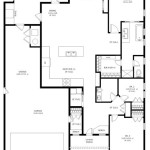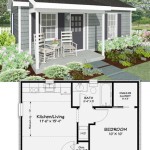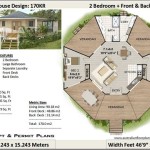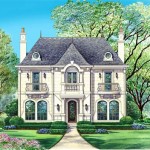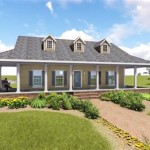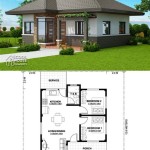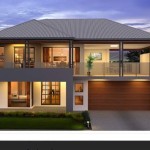Plans for Building Bluebird Houses: A Comprehensive Guide
Eastern bluebirds ( *Sialia sialis* ) are a beloved species of songbird known for their vibrant plumage and cheerful songs. Their populations have faced challenges over the years due to habitat loss and competition for nesting cavities from non-native species like European starlings and house sparrows. Constructing and strategically placing bluebird houses is a practical way individuals and communities can contribute to the conservation and support of these beneficial birds.
Successfully attracting bluebirds to nest requires careful planning and execution. This article provides a comprehensive overview of the factors to consider when building bluebird houses, focusing on design specifications, material choices, location considerations, and ongoing maintenance.
Design Considerations and Essential Features
The design of a bluebird house significantly impacts its attractiveness to bluebirds and its ability to protect the nesting birds. Several key features are crucial for a successful bluebird house.
Entrance Hole Size: The diameter of the entrance hole is perhaps the most critical aspect of the design. A 1.5-inch diameter hole is specifically recommended for eastern bluebirds. This size is large enough for bluebirds to enter but small enough to deter larger, more aggressive birds such as starlings. Variation in entrance hole size beyond this specification can lead to unintended consequences. Larger holes can invite undesirable species, while smaller holes might prevent bluebirds from entering.
Floor Dimensions: The interior floor space of the bluebird house should ideally be between 5 inches by 5 inches and 6 inches by 6 inches. This provides sufficient room for a bluebird pair to build a nest and raise a brood of young. Smaller floor dimensions can result in overcrowding and increased competition among nestlings, while excessively large spaces might make it difficult for the parents to effectively incubate the eggs and feed the young.
House Depth: The distance from the floor of the house to the bottom of the entrance hole should be approximately 5 to 7 inches. This depth helps to prevent predators from reaching into the nest and preying on the eggs or young birds. Inadequate depth makes the nest vulnerable to raccoons, snakes, and other potential predators. Conversely, excessive depth might make it difficult for fledglings to exit the house successfully.
Ventilation and Drainage: Adequate ventilation is essential to prevent the nest box from overheating during hot weather. Ventilation holes, typically four ¼-inch holes on each side of the box near the top, allow for air circulation. Drainage holes, usually located in the floor of the house, are critical for preventing water from accumulating inside, especially during periods of rain. Stagnant water can create a breeding ground for bacteria and fungi, posing a threat to the health of the nestlings.
Roof Design: The roof of the bluebird house should extend beyond the sides of the house by at least 2 inches to provide protection from rain and direct sunlight. A slightly slanted roof helps to shed water effectively. Some designs incorporate an overhanging roof with drip edges to further minimize water entry. The roof should also be easily opened for monitoring and cleaning purposes. Hinged roofs with secure latches are a common feature in well-designed bluebird houses.
Avoid Perches: Perches located below the entrance hole are unnecessary and can actually be detrimental to bluebird nesting success. Perches offer a convenient foothold for predators, such as house sparrows, allowing them to harass or even attack the bluebirds. Bluebirds do not require perches to enter the house.
Material Selection and Construction Techniques
The materials used to construct a bluebird house directly impact its durability, insulation properties, and attractiveness to bluebirds. Certain materials are preferred over others due to their suitability for outdoor use and their lack of toxicity.
Untreated Wood: The best material for building bluebird houses is untreated, naturally weather-resistant wood such as cedar, redwood, or cypress. These types of wood are durable and less likely to rot or warp when exposed to the elements. They also do not require chemical treatments, which can be harmful to the birds. Avoid using pressure-treated wood, as it contains chemicals that can leach into the nest and potentially harm the nestlings.
Thickness of Wood: The wood used should be at least ¾ inch thick to provide adequate insulation and structural integrity. Thinner wood can be prone to cracking and warping, and it offers less protection from temperature extremes. Thicker wood is more durable and will help maintain a more stable temperature inside the nest box.
Fasteners: Use galvanized or stainless steel screws and nails to assemble the bluebird house. These types of fasteners are rust-resistant and will not corrode over time. Avoid using staples, as they can pull out easily and compromise the structural integrity of the house.
Construction Techniques: Ensure that all joints are securely fastened and that there are no gaps or cracks that could allow water or insects to enter the house. Use exterior-grade wood glue in addition to screws or nails for added strength and durability. The house should be assembled in a way that allows for easy disassembly for cleaning and repair.
Painting Considerations: While it is generally recommended to leave the exterior of the bluebird house unpainted, if painting is desired, use a light-colored, non-toxic, water-based paint. Light colors help to reflect sunlight and keep the house cooler. Avoid using dark colors, as they can absorb heat and cause the nest box to overheat. Never paint the interior of the house, as the paint fumes can be harmful to the birds.
Location and Monitoring Strategies
The location of the bluebird house is critical for attracting bluebirds and ensuring their nesting success. Bluebirds prefer open habitats with scattered trees and shrubs, such as fields, pastures, and parks. Avoiding areas with heavy pesticide use is also critical.
Habitat Selection: Choose a location that provides a clear flight path to the entrance hole and is away from dense vegetation that could harbor predators. Bluebirds prefer to nest in areas where they can easily forage for insects. Ideal locations include open fields, pastures, and edges of woodlands. Avoid placing houses in areas with tall grass or weeds, as these can provide cover for predators.
Mounting Height and Direction: Mount the bluebird house on a post or pole at a height of approximately 5 to 7 feet above the ground. Face the entrance hole away from prevailing winds and direct sunlight. An eastern or southeastern exposure is generally preferred, as it provides morning sun and protection from afternoon heat. Mounting the house on a smooth metal pole can help to deter predators such as snakes and raccoons. Grease applied to the pole can also deter climbing predators.
Spacing and Competition: If installing multiple bluebird houses, space them at least 100 yards apart to reduce competition between nesting pairs. Bluebirds are territorial and will defend their nesting sites from other bluebirds. Avoid placing bluebird houses near areas where house sparrows are common, as these aggressive birds can outcompete bluebirds for nesting cavities. Regularly monitor the bluebird house for signs of house sparrow activity and take steps to remove their nests if necessary.
Monitoring and Maintenance: Regularly monitor the bluebird house throughout the nesting season, typically from early spring to late summer. Checking the nest box once a week can help to identify potential problems, such as predator activity, insect infestations, or nest box damage. Remove any old nests after each brood has fledged. This helps to reduce the risk of parasites and diseases. Clean the bluebird house thoroughly at the end of the nesting season, typically in the fall, to prepare it for the following year.
Record Keeping: Maintaining records of nesting activity can provide valuable information about bluebird populations and nesting success. Keep track of the date the nest was built, the number of eggs laid, the number of chicks hatched, and the number of fledglings. This data can be used to assess the effectiveness of the bluebird house and identify any potential problems.
Predator Control: Implement predator control measures to protect bluebirds from snakes, raccoons, and other predators. This may involve using predator guards on the mounting pole, removing vegetation that could provide cover for predators, and trapping or removing problem animals. Be sure to follow all applicable laws and regulations regarding predator control.
By carefully considering these factors when planning and constructing bluebird houses, individuals can contribute to the conservation and support of these cherished birds. Careful attention to detail in design, material selection, location, and maintenance will maximize the chances of attracting bluebirds and providing them with a safe and suitable nesting habitat. The resulting increase in bluebird populations can be a rewarding experience, contributing to the overall health and diversity of the local ecosystem.

Blue Bird House Plans Print Release Woodworking Nestor For Eastern Birds Of Preservation Read Bluebird Kits

Bluebird Birdhouse Plans Complete Step By Instructions For Building A Bird House

Free Bluebird House Plans Multiple Designs

Eastern Bluebird Birdhouse 70birds Plans Index

How To Build A Bluebird House With Pictures Wikihow

Plans Birdhouse For Bluebirds Grinder Jig Bird House Free Kits

Eastern Bluebird Maryland S Wild Acres

Bluebird House Plans Free Construct101

Creating Bluebird Habitat Free House Plans Bird

Bluebird Birdhouse Plans Complete Step By Instructions For Building A Bird House
Related Posts

